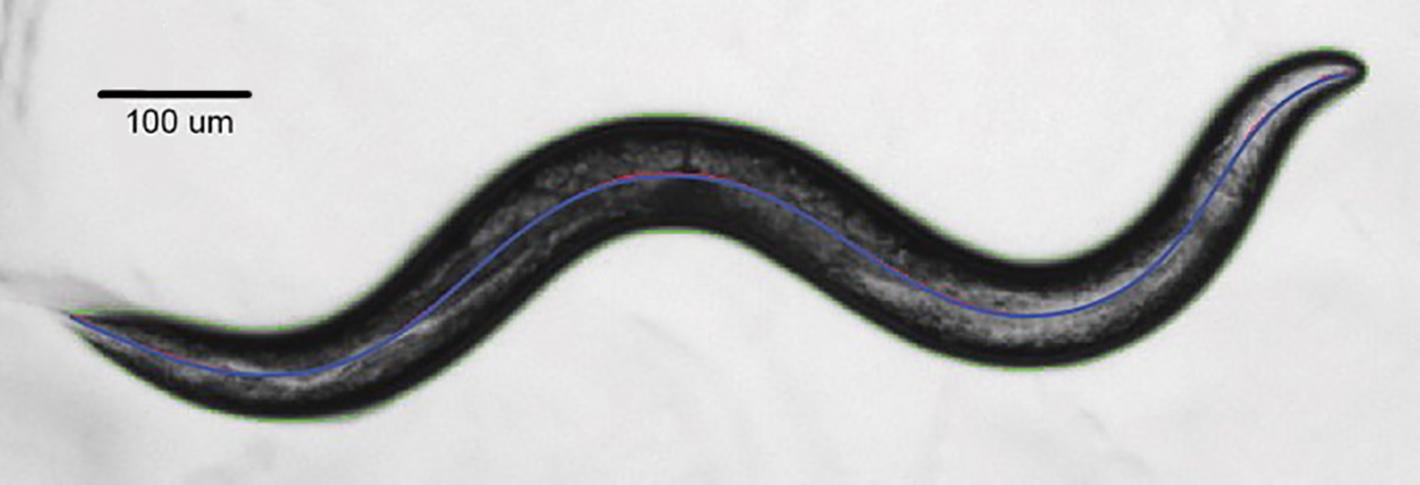
We frequently execute multiple movements simultaneously. Just ask a tennis player who must run to the ball and swing her racquet to hit it while in stride. How can animal nervous systems coordinate multiple motor programs in response to their circumstances? Working in the simple worm C. elegans, the lab of Steven Flavell, Lister Brothers Career Development Professor, has revealed a key role for dopamine, a neuromodulatory chemical that is also pervasive in the human central nervous system.
Above: A microscope image of a C. elegans worm includes machine vision tracing of its posture for analysis (blue line).
In a 2020 study, the lab invented a new microscopy platform capable of taking sharp, high-frame-rate videos of the worms for hours or days on end. That allowed them to comprehensively catalog worm motor behaviors including ones that blend multiple movement programs. One that particularly struck the team was that as worms roamed through patches of the bacteria they eat, they would also lay eggs, like farmers seeding crops in fertile soil. Previous work had found that the motor circuits for roaming and egg laying were separate. The question therefore was how they became coordinated. Flavell’s team investigation found that when a neuron called PDE senses the presence of food and integrates that with information incoming from other neurons about movement, it releases dopamine to override the release of GABA, another neuromodulator, that otherwise inhibits egg laying. The study therefore showed how a nervous system can coordinate multiple motor programs based on contextual factors (moving and also sensing food), providing fundamental insights into movement control. Interestingly, dopamine also plays a key role in coordinating human movement, so this work may also shed light on how dopamine functions in humans.

